Introduction to a Superhero among Plants
It might seem like an exaggeration to describe a species of grass as magic, or being capable of performing miracles.
But bamboo is no ordinary grass, it is one of the most useful and versatile plants on Earth, capable of serving as a food, building material, and even a clothing material, among many other uses.
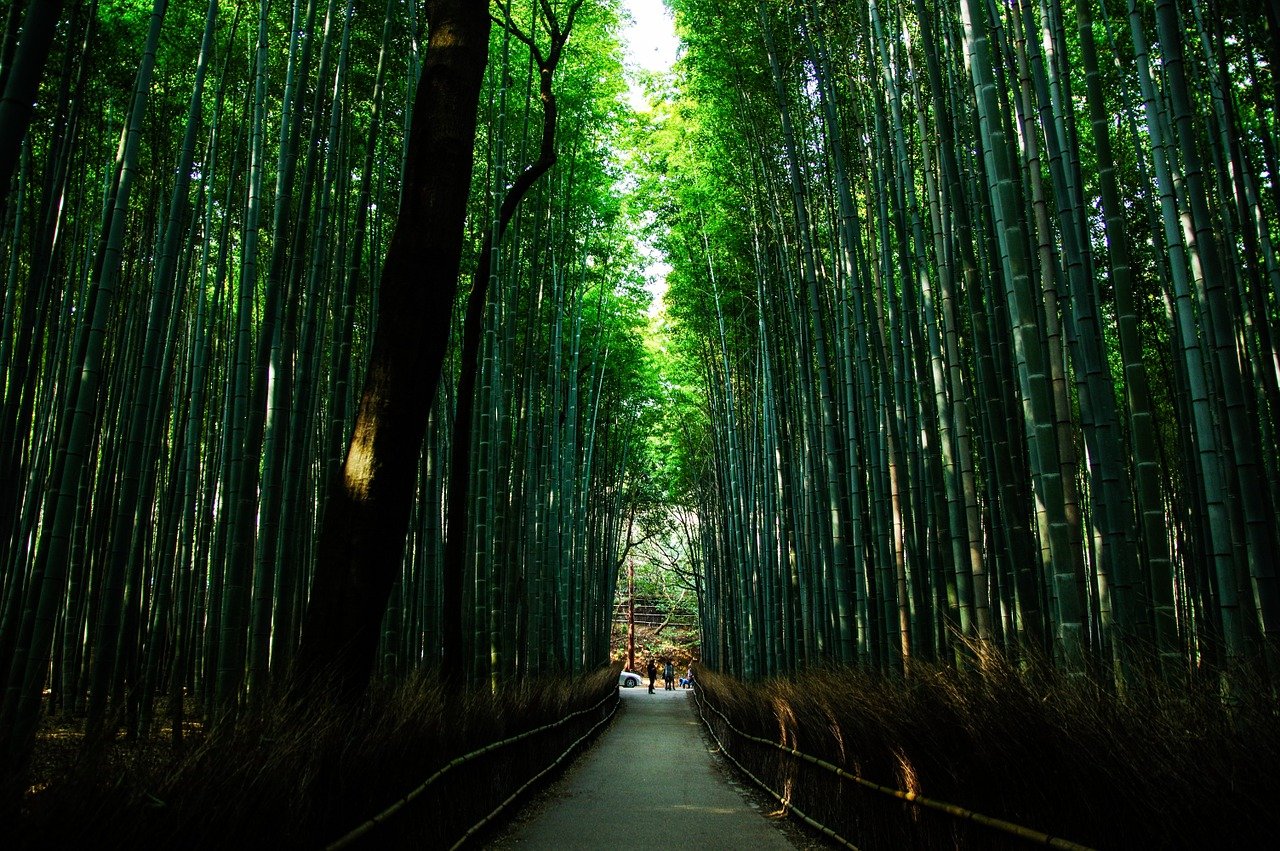
Image Bamboo Forest Pixabay Shingo_Nono
What is bamboo? -
“The bamboos … are evergreen perennial flowering plants in the subfamily Bambusoideae of the grass family Poaceae. In bamboo, as in other grasses, the internodal regions of the stem are usually hollow and the vascular bundles in the cross section are scattered throughout the stem instead of in a cylindrical arrangement.” Wikipedia
In other words, bamboo is a large species of grass, mostly hollow, with intermittent cross-sectional nodes, or ‘section dividers’. Bamboo consists mostly of strong, resilient cellulose fibers.
If you’ve ever examined the stem of ordinary grass, at least 6 inches tall, you will notice a few similarities, except on a mini-scale. Imagine an ant or beetle moving through that grass – that is like you in a mature bamboo forest.
Origin (Roots?), Distribution and Size
Bamboo evolved from prehistoric grasses some 30 to 40 million years ago, well after the extinction of Dinosaurs, estimated to be about 60 million years ago.
Although currently widely distributed throughout tropical, sub-tropical and warm temperate climate areas, bamboo is thought to have originated in China, where the first references to bamboo can be found. Source
The image below shows the current world-wide distribution of various bamboo species.
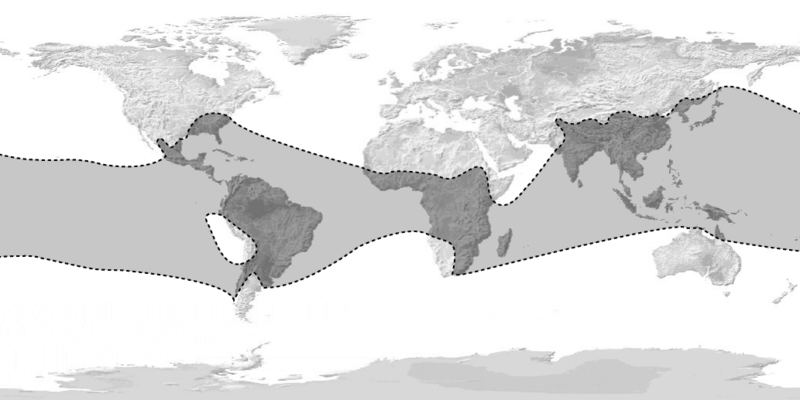
Image Wikimedia Commons
In total there are over 1000 bamboo species, and size depends on the species. Smaller species grow to only a few inches, while the largest bamboo-timber species can grow up to 30m (98ft) tall, and have a diameter of 30cm (11.8 inches). Wiki
Another bamboo super-power is its amazing growth rate:
“The world record for the fastest growing plant belongs to certain species of the 45 genera of bamboo, which have been found to grow at up to 91 cm (35 in) per day or at a rate of 0.00003 km/h (0.00002 mph). According to the RHS Dictionary of Gardening, there are approximately 1,000 species of bamboos.”
Guinness World Records
So, some bamboo species may grow more in a day vertically, than some slow-moving snails move along the ground in a day.
Just how Strong is Bamboo?
In general:
“Bamboo has a higher specific compressive strength than wood, brick, or concrete and a specific tensile strength that rivals steel.” Wikipedia
In fact, bamboo is so strong and versatile, that it is being called the ‘green steel’ of the 21st Century by some. Financial Times
Many builders, engineers and architects are now recommending that as far as practicable, bamboo should replace steel in many construction applications. Bamboo is more versatile, cheaper, and more sustainable than steel. Source
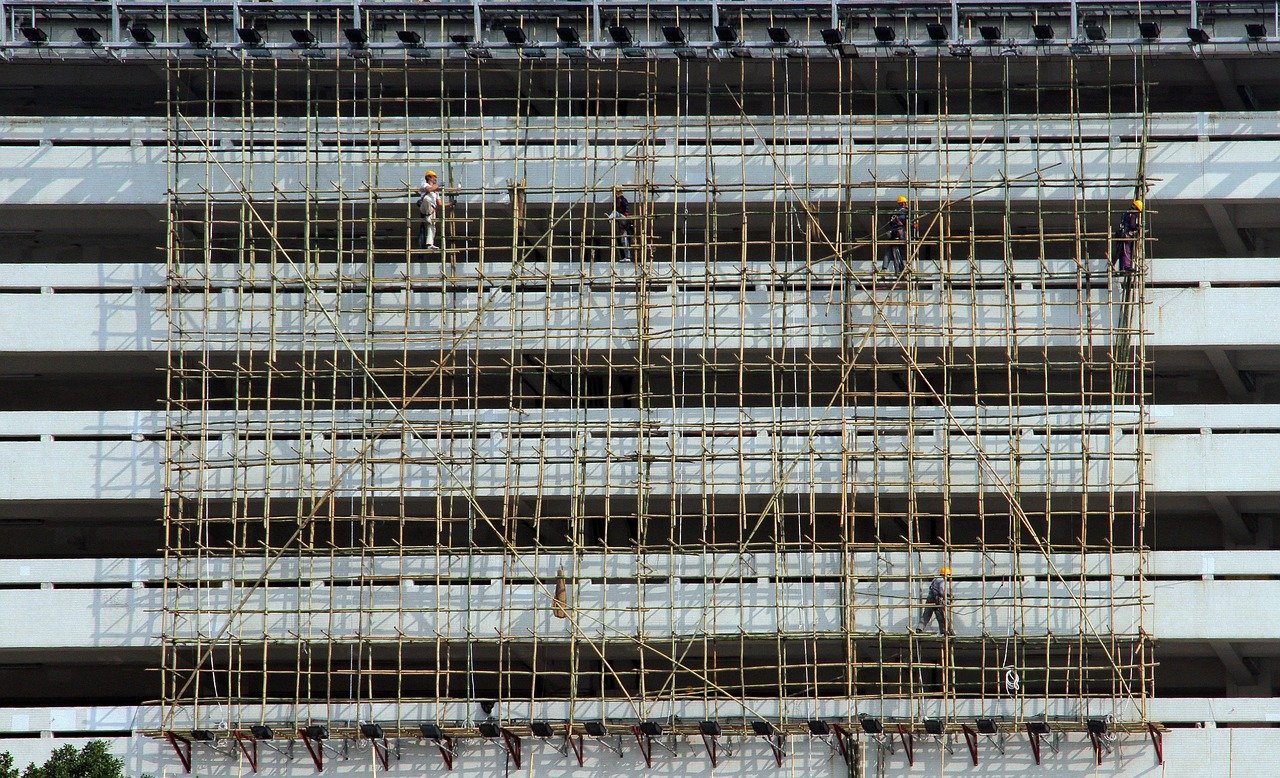
Image - bamboo used as scaffolding - Pixabay Pixource
For a scientific analysis of bamboo in some reinforced concrete applications, see: ScienceDirect
And for bamboo strength see:
Here
Bamboo and the Environment
Bamboo is very environmentally friendly, and plays an important role in both local and global ecologies.
Bamboo produces up to 35% more oxygen than trees, while absorbing large amounts of carbon dioxide. In fact, in many ways, bamboo may be the most beneficial to the environment of any plant. The Guardian
As a fast-growing plant, bamboo also plays a role in carbon dioxide absorption. Studies show that bamboo can collect an average of 21.41 tons per hectare per year. It is a very effective carbon sink. Source
The same studies also show that some adult species of bamboo produce 5.8 times the biomass compared to other forest plant species.
Because bamboo has a strong root system, and bamboo forests can grow very thickly, bamboo acts as a soil stabilizer, preventing soil erosion and river bank collapse. Bamboo plants play an important role in watershed areas, preventing water evaporation, and excess soil runoff into streams and rivers.
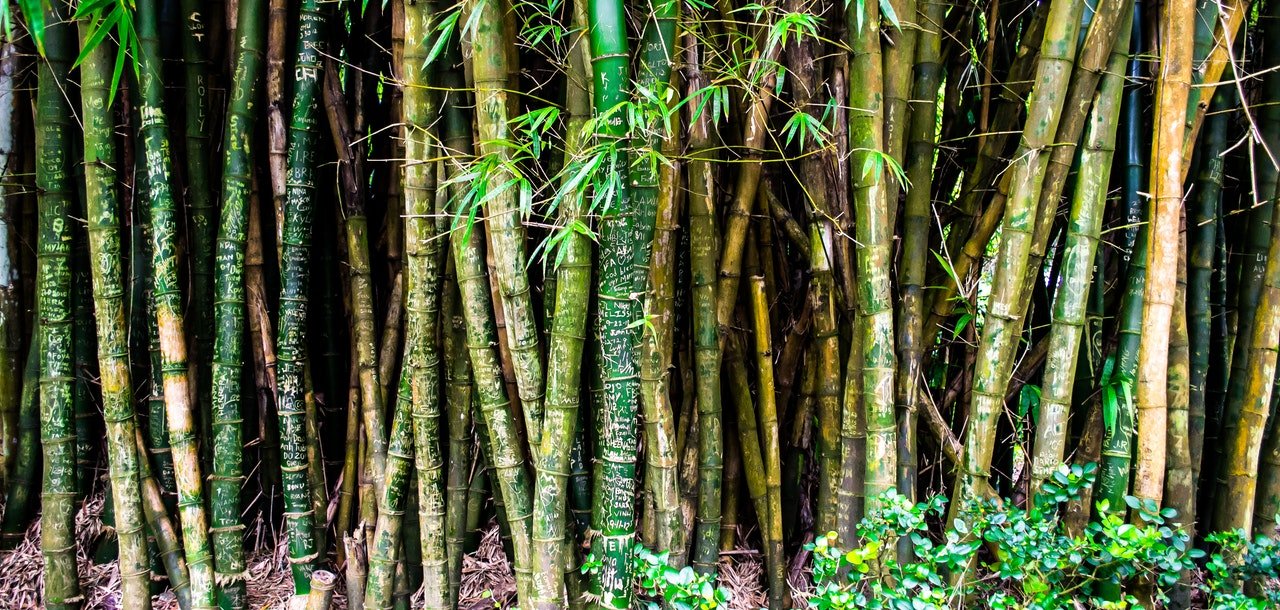
Image - thick growth of bamboo - Pexels - Brian
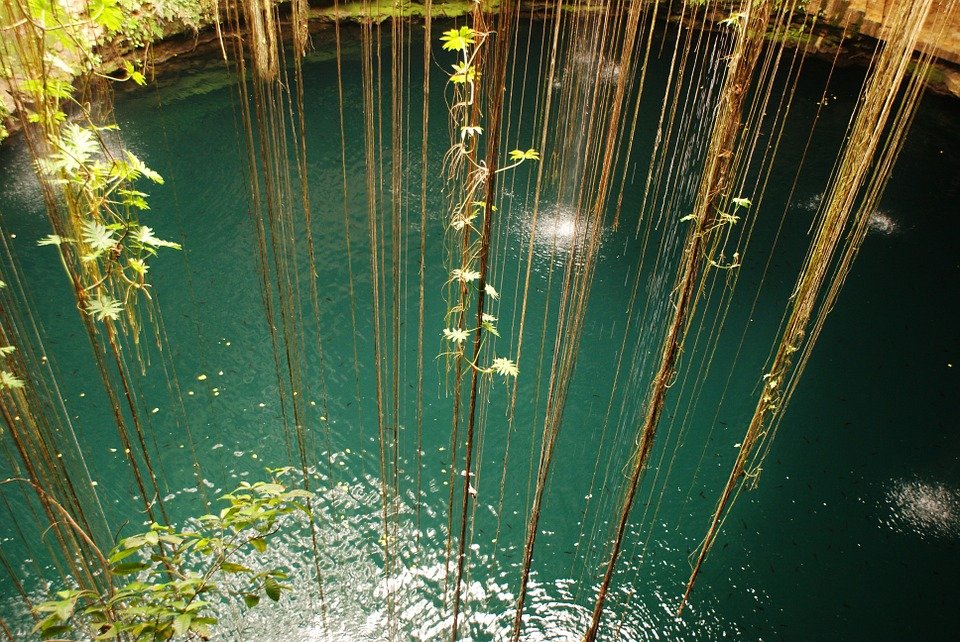
Image Pixabay - Foundry
Bamboo, as well as growing fast, is a naturally renewable resource. After cutting, new shoots will grow from the root system and stem, without the need for replanting.
Bamboo shoots, stems and leaves are the major food source for China’s giant pandas, the red panda of Nepal, and Madagascar’s bamboo lemurs. Other animals that eat parts of the bamboo plant are rats, mountain gorillas, chimpanzees and elephants. Wikipedia
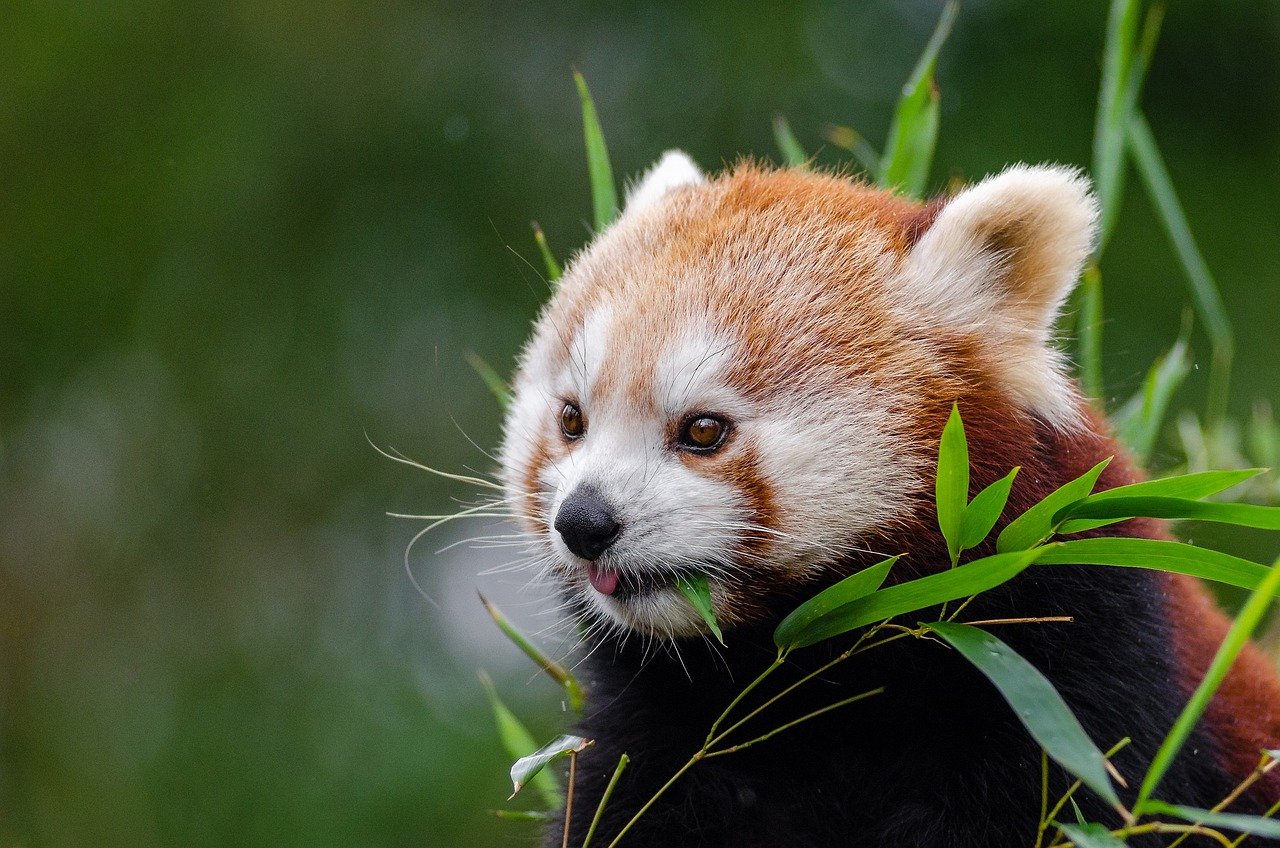
Image - red panda - Pixabay - janeb13
Bamboo and Culture
If you are from, or have ever been to, China, Japan or Southeast Asia, you will know that in many ways, bamboo is culturally iconic.
These cultures have lived with bamboo for thousands of years, and appreciate its value and characteristics. They have historically used bamboo to build houses and bridges, make tools, weapons and decorations, and as a food and fuel source. In these countries, bamboo has come to symbolize various characteristics and virtues.
In China:
“Bamboo is viewed as a symbol of traditional Chinese values. It is an example of the harmony between nature and human beings. Ancient Chinese people designated the plum, orchid, bamboo and chrysanthemum as the "four gentlemen", and pine, bamboo and plum as the "three friends in winter". People think its deep root denotes resoluteness; its tall, straight stem represents honor; its hollow interior modesty and its clean and Spartan exterior exemplify chastity.”
China Daily
In fact, there are more than 400 species of bamboo in China, more than any other country. According to the same article, bamboo has been cultivated and used in China for some 7,000 years.
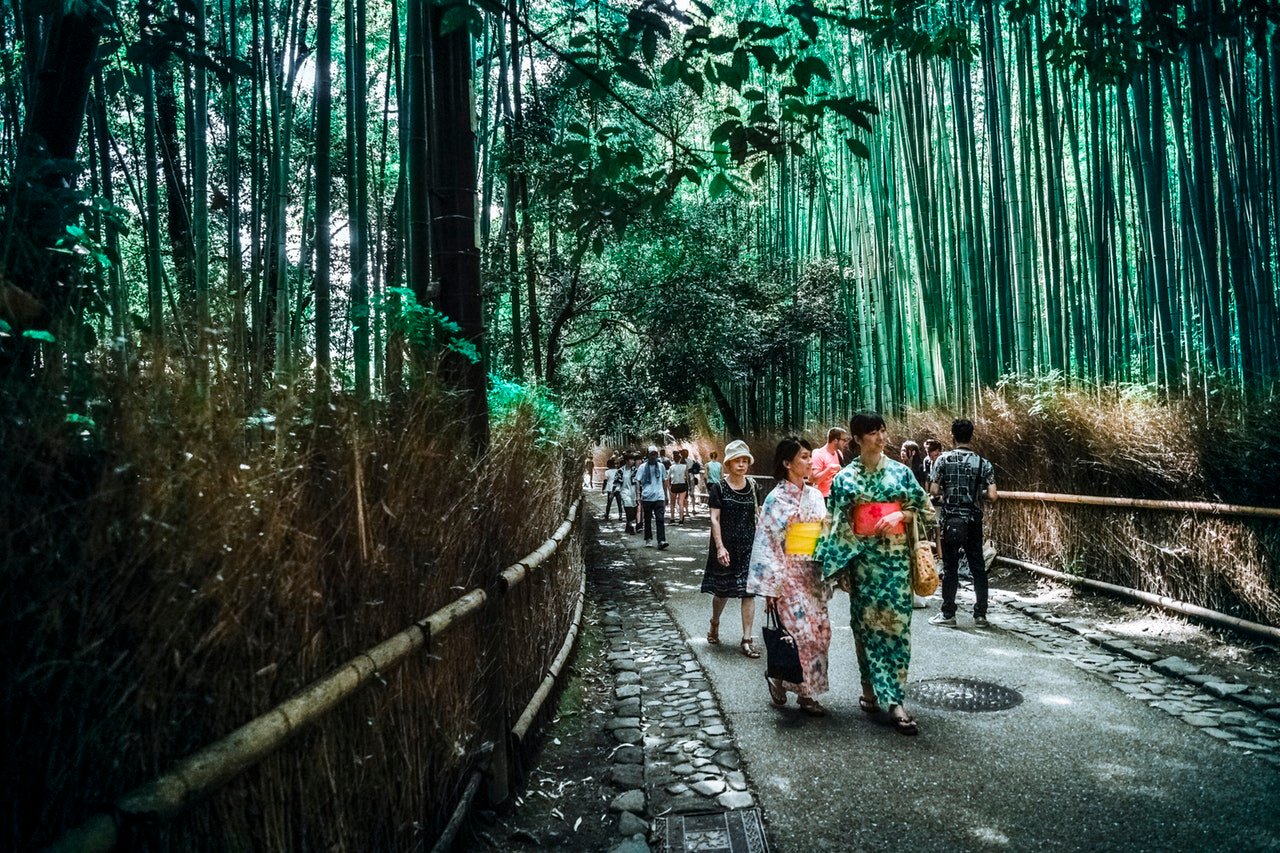
Image Pexels - Donald Tong
In Japan:
“Because of its sturdy root structure, it is a symbol of prosperity in Japan. For years, people were told to run into the bamboo groves in the event of an earthquake, because the bamboo's strong root structure would hold the earth together. Simple and unadorned, the bamboo is also symbolic of purity and innocence.” Source
In Thailand, to paraphrase an ancient Siamese proverb, foreign policy should be like: ‘bamboo in the wind, strongly rooted, but able to bend with the winds, surviving’. Source
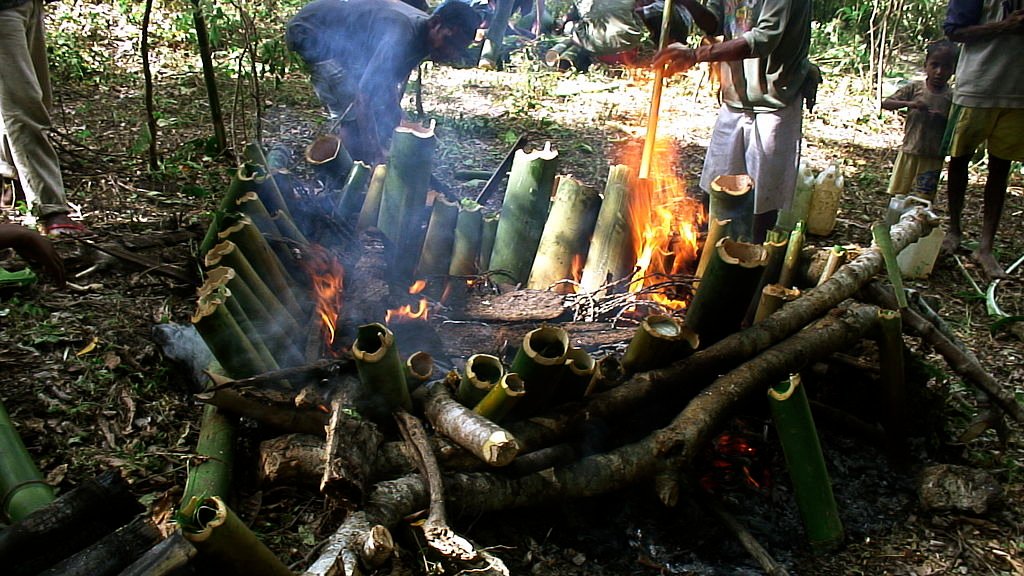.jpg)
Image - In East Timor, cooking food in bamboo is called tukir. Source Wikimedia - By Tatoli Ba Kultura - Tatoli Ba Kultura, CC BY-SA 3.0,
And so it goes throughout the region, each culture, each country having its own bond with bamboo. The thing they all share, is that they view bamboo as a plant of many virtues.
The Many, Many Uses of Bamboo
Imagine gathering an edible item from a source, putting it into a strong container made from the same source, and then cooking it over a fire, fueled by the same source yet again.
This is bamboo. Edible shoots and softer fibers, a strong container, and a fuel source, all at the same time. The only difference in usage is the stage of growth, and the part of the plant used. *Note – the edible parts of bamboo must be processed first to remove any plant toxins.
You could write books based only on the uses of bamboo. Many have. Here I will just describe a few main ones, and a few unusual ones.
Building
Because of its strength, versatility and flexibility, bamboo has long been used in traditional construction. Houses, bridges, fences, walls and waterways can be made using bamboo.
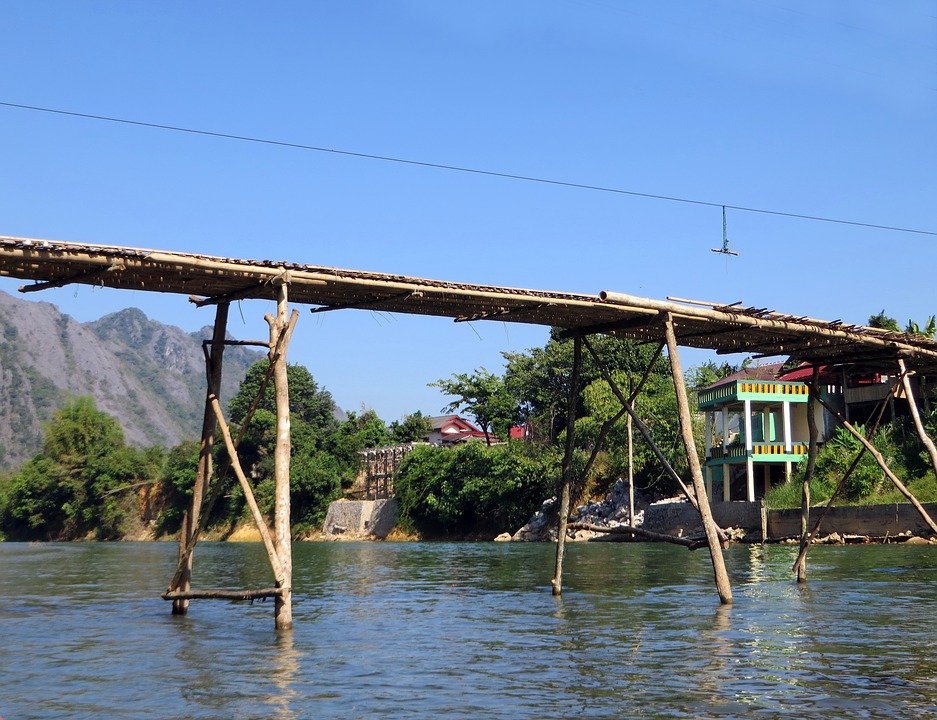
Image Pixabay - DEZALB
Food
Raw bamboo shoots contain cyanogenic glycosides, naturally occurring toxins. Bamboo shoots cannot be eaten raw, they must be boiled/ cooked first to remove the toxins. Many Asian dishes like stir frys, soups, salads and dessert use bamboo shoots.
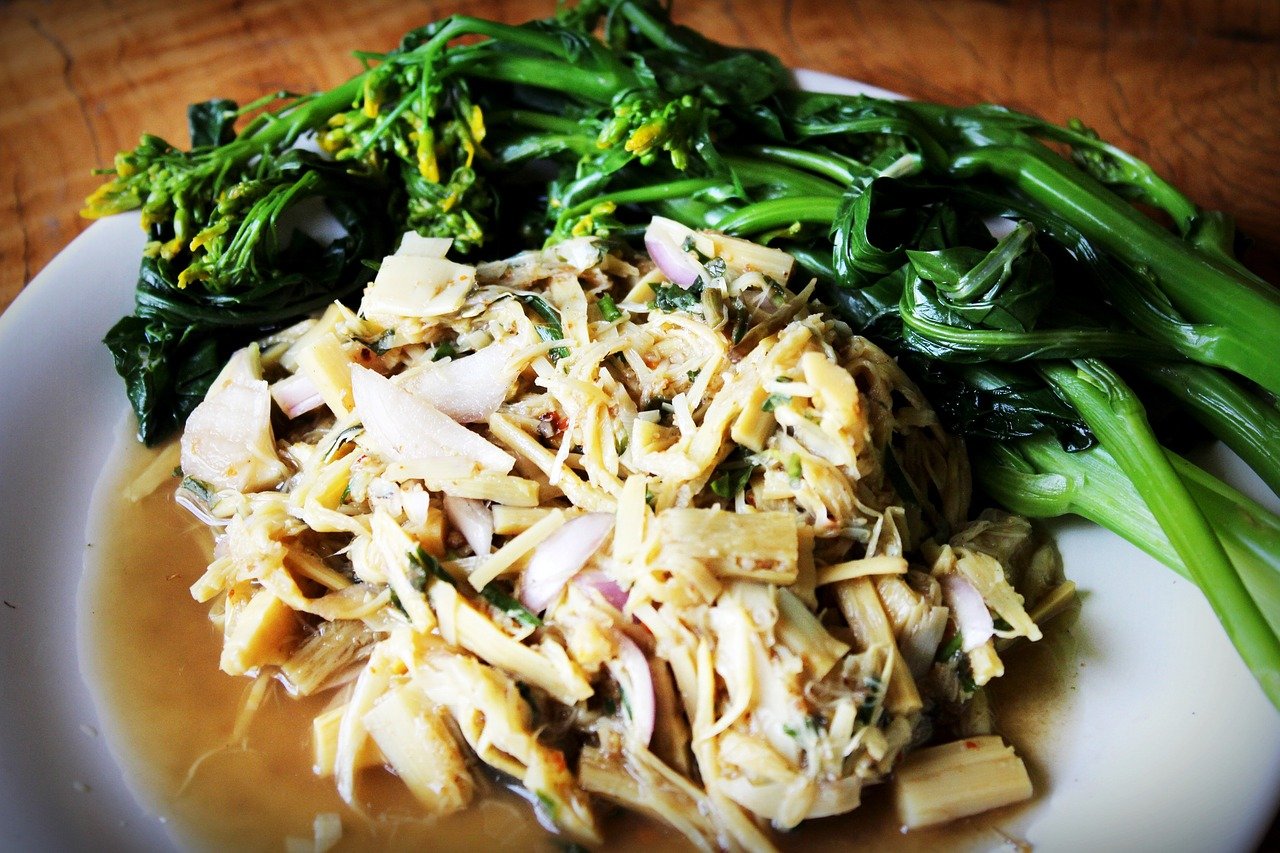
Image - stir fry with chicken and bamboo shoots mixed Pixabay
Image - soup with bamboo shoots Wikimedia Commons for reuse - Jpatokal
Fuel
Bamboo can be treated at high temperatures to create charcoal. It can also be processed and used as a bio-fuel.
Textiles
New methods of fiber processing are allowing bamboo to be used in textiles, fabrics and clothing.
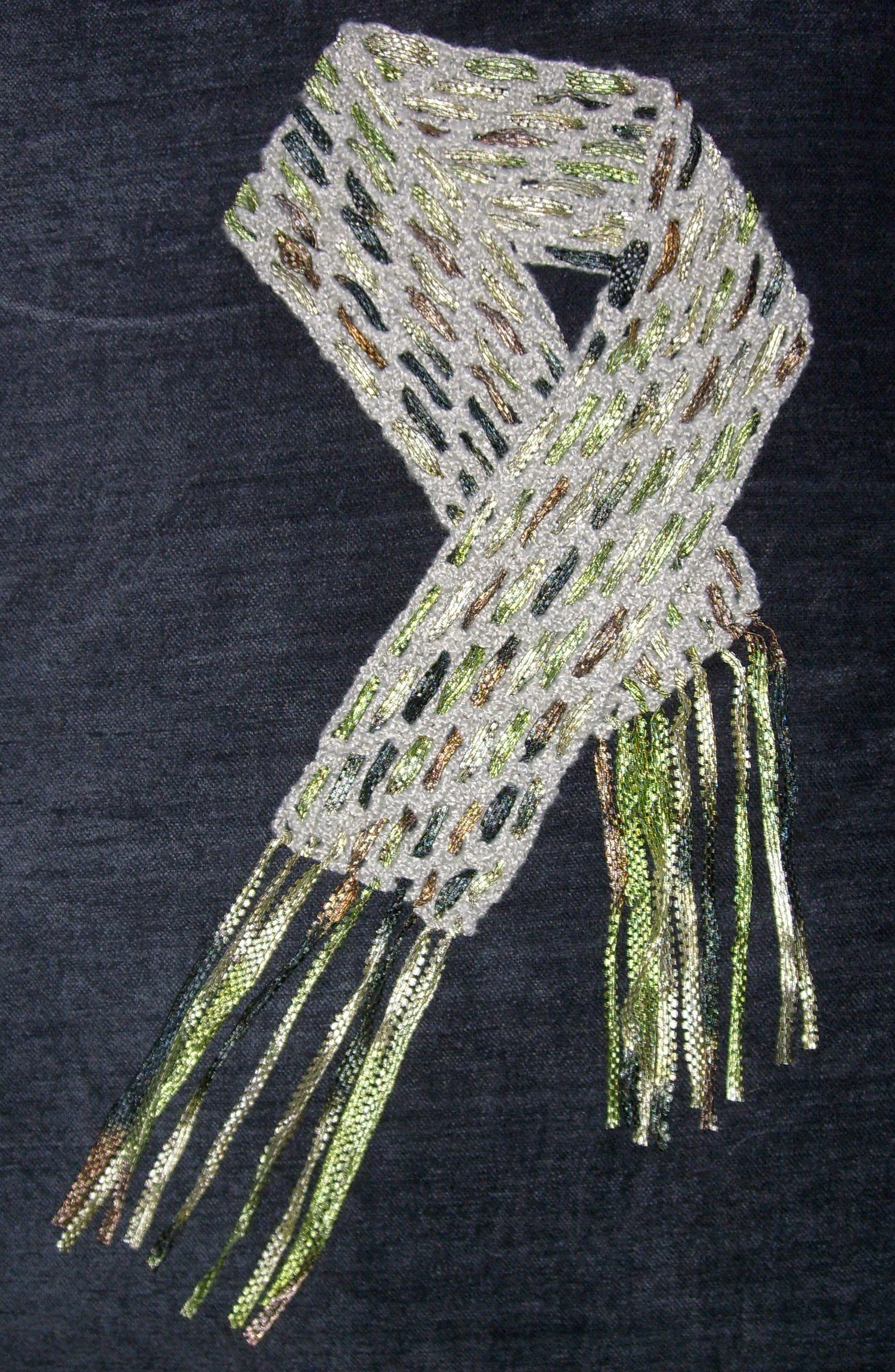
Image - Scarf made with bamboo yarn - Wikipedia CC - By Durova - Own work, CC BY-SA 4.0,
Other uses, among potentially hundreds, include :
• Water pipes
• Writing / painting implements
• Writing / painting surfaces
• Musical instruments, including drums, wind chimes, wind and various percussion instruments
• Furniture and other household items
• Rafts for water travel, fishing rods
• Weapons in traditional martial arts
• Traditional medicine
• Eating utensils
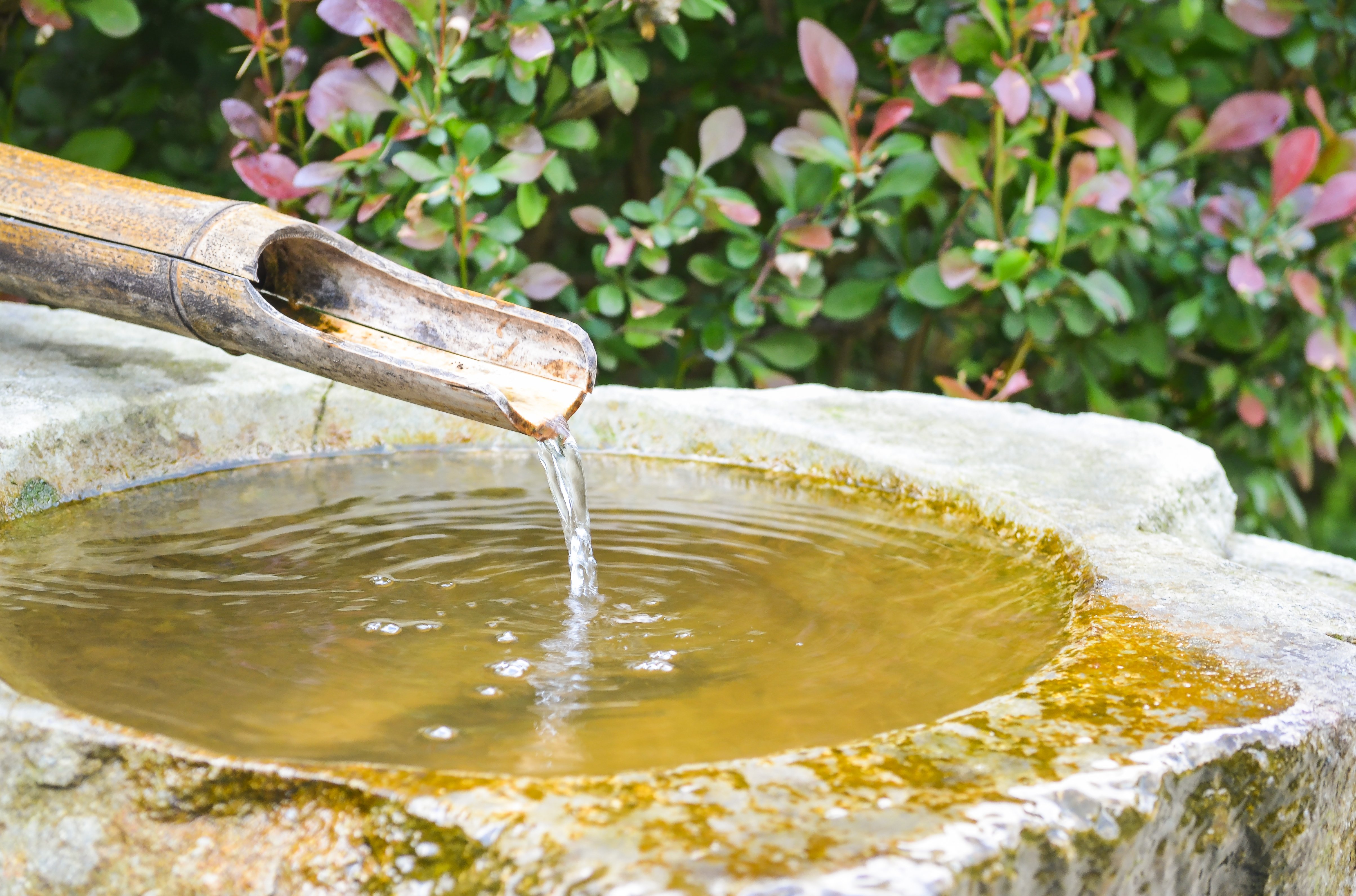
Image Moni's Photos CC0
Basically, many things that can be made for human use, can potentially be made using bamboo. One creative soul even made a bamboo-frame bicycle:
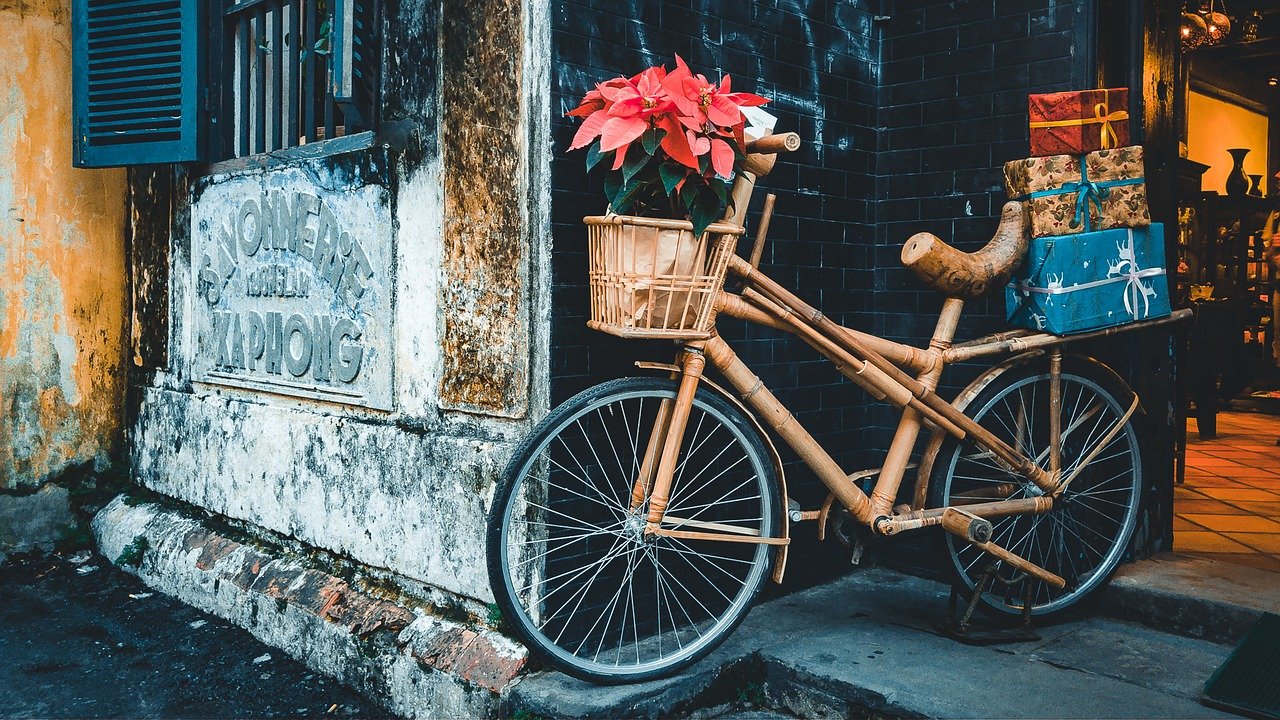
Image Pixabay - Stocksnap
Fun Facts
• Prior to 1904, when tungsten started to be used, carbonized bamboo filament was used in light bulbs. Source
• Why do we call it ‘bamboo’? - “The origin of the word Bamboo comes from the Malay word "Mambu". Malay is the national language of Malaysia and Indonesia. In the late 16th century (1590-1600) the Dutch named it "Bamboes" after which it got its Neo-Latin name "Bambusa".” Source
To End -10 Simple Life Lessons from Bamboo
(This Moment Japan, source below)
- Remember: What looks weak is strong.
- Bend but don’t break.
- Be strongly rooted, yet flexible.
- Slow down your busy mind.
- Be always ready.
- Find wisdom in emptiness.
- Smile, laugh, & play
- Commit yourself to growth & renewal.
- Express usefulness through simplicity.
And finally - Unleash your power to spring back!
Source for ‘10 Simple Life Lessons from Bamboo’ This Moment Japan
To watch an inspiring Tedx video about ‘Lessons from the Bamboo’ click Tedx Talk

